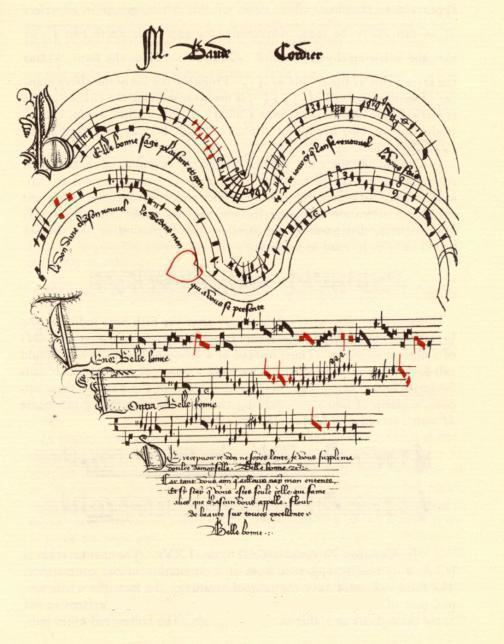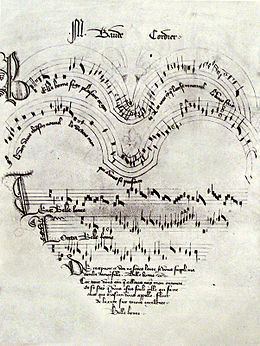Name Baude Cordier Role Composer | Died 1440, Dijon, France | |
 | ||
Similar People Ferrara Ensemble, Johannes Ciconia, Crawford Young, Ensemble Organum, Guillaume de Machaut | ||
Baude cordier se cuer d amant par soy humilier
Baude Cordier (born c. 1380 in Rheims, died before 1440) was a French composer from Rheims; it has been suggested that Cordier was the nom de plume of Baude Fresnel. Cordier's works are considered among the prime examples of ars subtilior. In line with that cultural trend, he was fond of using red note notation, also known as coloration, a technique stemming from the general practice of mensural notation. The change in color adjusts the rhythm of a particular note from its usual form. (This musical style and type of notation has also been termed "mannerism" and "mannered notation.")
Contents

Ten of Cordier's secular pieces survive, most of which are rondeaux:
Two of the composer's chansons are in the Chantilly Manuscript and are well-known examples of eye music:
His mass movement in the Apt MS is in the later, simpler fifteenth-century style.
